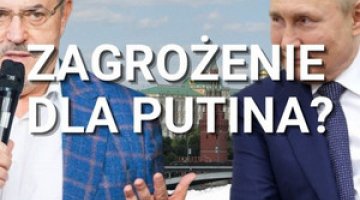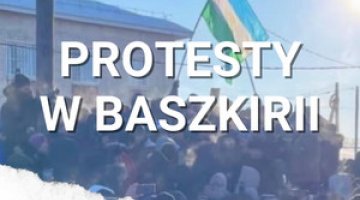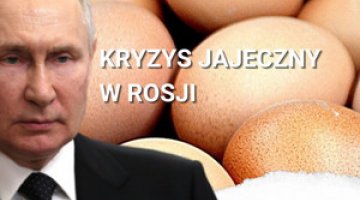Russia’s attack on Ukraine: day 69

The aggressor troops continued to shell and bomb Ukrainian positions, Kharkiv and Mykolaiv, and undertook offensive actions on various sections of the contact line, locally improving the so-called tactical position, but generally failing to achieve success and suffering losses. On 3 May in the afternoon they were to launch a massive assault on the Azovstal combine. Ukraine’s National Security and Defence Council Secretary Oleksiy Danilov said the country did not have enough heavy weaponry to deblock Mariupol.
On the same day, rocket attacks took place in eight oblasts, mainly on railway supply system facilities – six traction substations in Dnipropetrovsk, Kirovohrad, Lviv (three facilities) and Zakarpattia (in Zakarpattia the gas pipeline in Volovets was damaged). In addition, targets were attacked in Donetsk, Kyiv, Vinnytsia and Odesa oblasts (in the Artsyz region on the route from Romania to Odesa; on 2 May there was another strike on the recently partially opened railway bridge over the Dniester Liman). The Russian defence ministry announced the use of Oniks winged rockets, hitherto considered a weapon for destroying ships, to attack targets in the Odesa Oblast. This gave rise – after a pause of several weeks – to new media reflections on the depletion of the invader’s stock of precision weapons.
According to the Main Reconnaissance Directorate of the Ministry of Defence of Ukraine, a recruitment drive for contract service has been activated in Russia, targeting citizens of Siberia and the Far East. Recruitment quotas of 200 ‘volunteers’ per week are to be in place, with priority given to those with military experience.
The Head of the Personnel Board of the Staff of the Land Forces of Ukraine presented data on the course and prospects of mobilization. At the end of February and the beginning of March the manpower of the units was fully completed. Since then, the rate of recruitment has slowed down and is associated with the need for their ongoing replenishment. It is possible that mobilisation will continue after 24 May (the current one has been announced for three months), but no information has been provided on the army’s main needs in terms of military specialisations.
In the occupied Kherson Oblast, a ‘war for the Internet’ is underway. On 30 April, the aggressor cut off most Ukrainian operators and rerouted network traffic through its infrastructure, meaning it is routed through Russia and subject to censorship. Ukrainian telecoms operators are able to provide telephone services on 70% of the Oblast’s territory, but cannot maintain mobile internet access.
The head of Ukrainian military intelligence, Kyrylo Budanov, said that the invaders planned to create two provinces in the occupied territories. The first, called Taurida (which was part of the Russian Empire from 1802 to 1917), is to include the territory of Crimea and parts of the Kherson and Mykolaiv oblasts, and the second – the Odesa Oblast, the city of Dnipro and parts of the Kherson, Mykolaiv and Donetsk oblasts. The Kremlin was yet to decide whether the occupied Donbas territories would be incorporated into Russia. Budanov warned that the aggressor wanted to orchestrate a humanitarian disaster to force the local population to accept aid on condition of accepting the new political reality. He also announced that the Russians were suffering from a significant shortage of personnel, and that collaborators – due to effective resistance and lack of popular support – were unable to manage the occupied localities.
The invaders exported a third of the grain reserves (about 400,000 tonnes) from the occupied territories in an attempt to reduce shortages in some regions of Russia. According to Kyiv, about 1.3 million tonnes of grain remain in the occupied territories, which is needed to ensure the food security of the population and to carry out sowing of spring crops.
On 3 May, Ukraine’s Verkhovna Rada voted a final ban on pro-Russian political parties (their activity was suspended in March) whose programme and activities deny or justify Russian armed aggression, portray it as a civil war and glorify or justify those contributing to it. The parliament also adopted amendments to the law ‘On the foundations of national resistance’ allowing territorial defence forces (TDF) to carry out tasks independently in areas of combat operations. This shows that the armed forces need immediate support on the front line. TDF can cover sections where there is no intense fighting, allowing regular troops to be redeployed to where enemy attacks are ongoing.
The Verkhovna Rada was addressed – for the first time since the outbreak of war – by President Volodymyr Zelensky, who appealed to its members to be united and not to waste time on legislation of secondary importance. He stressed that they were MPs of ‘the greatest country at the moment’ and therefore should be guided by ‘rationalism and healthy nationalism’. In turn, in an interview with The Wall Street Journal, he expressed his belief that a ceasefire could only come about as a result of a meeting between the presidents of the warring parties and the formal signing of an agreement. At the same time, he stressed that Ukraine would never accept the frozen conflict and Russia’s territorial gains.
British Prime Minister Boris Johnson appeared before the Verkhovna Rada by videoconference and announced the transfer of another package of military aid, including rockets and artillery radars. 32 diplomatic missions evacuated after the start of hostilities to Lviv or abroad have already returned to Kyiv. By the end of May, the US embassy may return to the capital (on 24 April President Joe Biden appointed Bridget A. Brink the ambassador in Ukraine, after almost three years of vacancy in the post).
The Rating Group’s survey shows a progressive decline in Ukrainians’ identification with their Soviet past. The collapse of the USSR is regretted by 11% of respondents (down from 46% in 2010; in Russia in this period there was an increase from 55 to 63%). Attitudes towards 9 May have changed: before 2022 it was considered a significant, personal holiday by 80% of respondents, while now it has become a relic of the past (for 36%) or just an ordinary day (for 23%). As many as 80% of Ukrainians refer to this day as Remembrance Day, and only 15% as Victory Day (in 2018 – 58%). At the same time, 78% highly value the contribution of their own people to the victory over fascism, and 67% believe that Ukrainians had the greatest share in the triumph in World War II. 81% recognise the Organization of Ukrainian Nationalists and Ukrainian Insurgent Army (UPA) as participants in Ukraine’s struggle for independence (this figure has quadrupled since 2010). 65% support renaming Russian or Soviet street names and 71% support dismantling monuments associated with Russia. The percentage of Ukrainians who use Russian in their daily communication continues to decrease – in 2012 it was about 40%, at the beginning of the invasion – 18%, and by the end of April – 15%. Currently, the number of those declaring themselves ‘bilingual’ is increasing (33%).
According to the Russian defence ministry, 1 092 137 people, including 196 356 children, have been deported from Ukraine to Russia. The Russians claim that a total of 2 754 241 people are to be deported there.
On 3 May, 19,400 people entered Poland from Ukraine (an increase of 4.3% on the previous day), and since the outbreak of the war – 3.14 million. In the opposite direction, 15,800 travellers crossed the border, and 1 million since 24 February. In Germany, since the beginning of the aggression, law enforcement agencies have registered more than 400,000 Ukrainian refugees, mainly women, children and elderly people (data are constantly updated), and 92,000 Ukrainian children and young people have been sent to schools there.
Commentary
- The situation on the line of contact between the troops has been a stalemate. The fighting is taking place in increasingly ruined localities in the Donbas (including Popasna and Rubizhne), while attempts by Russian units to advance are aimed mainly at reconnaissance of the enemy’s positions. However, the information available shows that the aggressor’s command is gathering forces for an offensive and is consciously delaying its launch: the British defence ministry has estimated the number of Russian battalion tactical groups in the Izyum area at 22; in recent days some units from Mariupol have been sent to the Sievierodonetsk area and the Zaporizhzhia Oblast. One of the reasons may be the lack of Russians’ sufficient advantage over the defenders. This would indicate a diametric change in assumptions compared to the first period of the war, when the invaders tried to break through the Ukrainian positions, even with fewer troops at their disposal. On the other hand, the Ukrainians are unable to mount any serious offensive action, and their local successes come down primarily to the recapturing of towns abandoned by the Russians. The continuation of the aggressor’s artillery shelling of Kharkiv also testifies to the unchanging situation.
- The Russian forces attach great importance to taking control of Ukraine’s civil communications, blocking the services of local operators and including the occupied territories in their own information space. The creation of a Russian information bubble is intended to cut off the local population from other communications and to build up a misleading picture of the situation in the country, in order to make it easier for the occupying forces to exert psychological pressure on civilians to get them to cooperate.
- As a result of the war in Ukraine, the derusification and de-Sovietisation of historical memory and social attitudes is progressing rapidly. Hostility towards present-day Russia is also causing a change in attitudes towards the common Soviet past: nostalgia for the USSR and sympathy for historical figures associated with the USSR and Russia have drastically decreased. Along with this, Ukrainians are demonstrating a growing pride in their national heroes and symbols, including those which used to be controversial (such as the Ukrainian Insurgent Army - UPA, Bandera, Petlura or Mazepa), and in the Ukrainian contribution to victory in World War II. The government plays along the popular mood by banning pro-Russian political parties and removing Russian culture and historical figures from public spaces and school curricula.




